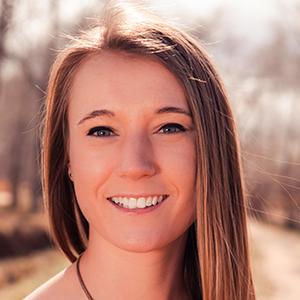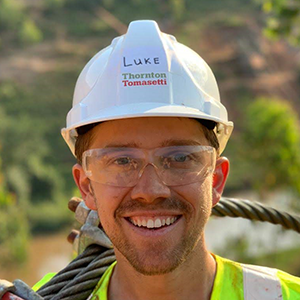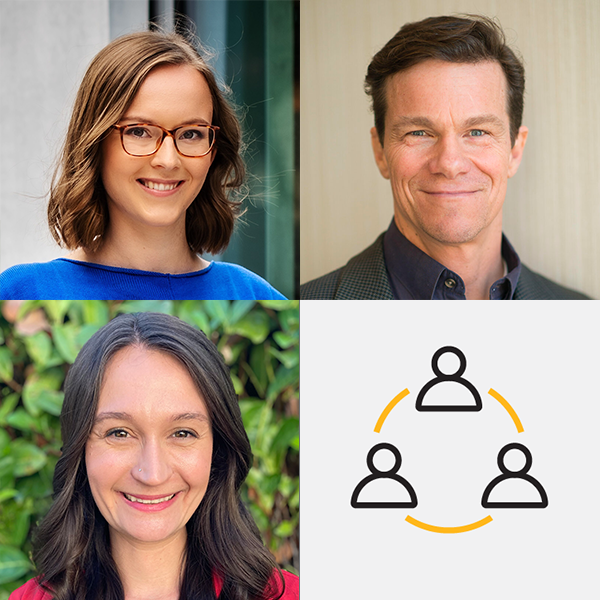What are you and your company doing to help reduce embodied carbon emissions?
Louise Hamot
Global Lead of Lifecycle Research, Integral Group
From my earliest days as an architect, I have been captivated by the study of materials. During my time at McLennan Design, an architecture practice, I had an epiphany when working on a “living building challenge” residential project. I managed the material aspects of the project and came to understand that the environmental, health, social, economic and technological issues related to material choices was central to the final quality and impact of our buildings on both people and the planet. I understood that questioning our material choices through each of these lenses enables holistic thinking, resulting in regenerative building solutions.
Soon after I joined Integral Group, a global deep green engineering practice, as a sustainability engineer (I have an Engineering Diploma in Building Physics), it was natural for me to start investigating the environmental repercussions of the materials used in the mechanical, electrical and public health services. It is my belief that lifecycle thinking should be fully integrated into the design process to see a significant impact on an eco-systemic level.
In my current role at Integral Group, I lead the development of Integral’s global lifecycle practice and research. I support colleagues involved in LCA work across North America, Australia, and Europe to advise architects and clients on design strategies to improve their environmental impact, with a focus on cutting embodied carbon emissions. My work in the development of embodied carbon studies and rules of thumb in MEP design has supported engineers and design teams in making the right decisions early in the design process.
I am most proud of having worked to reduce embodied carbon emissions through the following initiatives:
- Created a embodied carbon calculation methodology (CIBSE TM 65) at product level for mechanical, electrical, public health equipment when no EPDs are available. This will enable consistent studies (a study on heating in residential schemes is currently underway) to be done to understand hotspots and key levers.
- Writing a Refrigerants Best Practice Guide to help design teams and engineers mitigate the impact associated with refrigerant. This is the first guide of its kind.
- Developing The Radiant Whole Life Carbon Study, comparing VRF systems and radiant heating in an office building from both an operational and embodied carbon perspective in detail.
- Working with Building Transparency on creating embodied carbon baseline for MEP equipment, to help upskill the industry as a whole.
- Contributing to the writing of the first LETI Embodied Carbon Primer.

Louise Hamot
Brian McSweeney
Structural Engineer, TLC Engineering
“A sustainable future” – these words are frequently thrown about in our world today, and many are excited and focused on how we can be good stewards of our planet. In the building industry, we have focused on reducing the carbon dioxide emissions associated with the operation of our buildings. This “operational carbon” results from the use of HVAC in heating and cooling, lighting, and other processes that make our buildings functional day-to-day.
Up until recently, most Structural Engineers have (and many still do) viewed their contribution to reductions in global-warming potential and carbon emissions as a couple of simple lines in the specifications for each project. Local sourcing and recycled content are the lines-du-jour for us, and always feel like a quick one-off nod to sustainability. Personally, it never felt like enough to me that this was our contribution, but until I was introduced to the Sustainability Committee in the Structural Engineering Institute (SEI), I was unaware that there was much, much more we can do to reduce carbon emissions just by the way we design and specify materials and shapes for our projects.
SEI and the Sustainability Committee are launching an initiative this Fall called the SE2050 Challenge, which seeks through education, resources, and partnership with other sustainability-oriented organizations to put Structural Engineers into the forefront of this new frontier in carbon emissions reduction for buildings. Companies are being asked to sign on and commit to SE2050, aiming for net zero embodied carbon in our buildings by 2050.
We cannot tackle this challenge on our own, and we shouldn’t seek to do so. CLF’s communities on the web will provide a key starting point for those being introduced to the field of embodied carbon calculations, helping them to develop and implement Embodied Carbon Action Plans (ECAPs). It will provide a great place to exchange ideas and push research and calculations in new directions.
For those who watched the LEGO Masters show (I am one such fan), we know that we all have to contribute pieces and portions to reach our net zero by 2050 goal. We need to leverage the tools and resources already available so that participation can kick off quickly for each company that commits to SE2050 – tools such as the EC3 tool; papers written by members of CLF, SEI, Architecture 2030 and others; and the myriad of other resources that provide a good starting point to those who are new to embodied carbon.
I’m excited to be a part of this process. As a moderator for the CLF structures forum, my goal is to spur conversation, highlight events and resources, and generally facilitate connections between members of the engineering community. I also want to serve as a link to the SEI Sustainability Committee for those who have questions, comments, and ideas. We welcome your active and enthusiastic participation. And we look forward to what the future holds!

Brian McSweeney
Lindsay Rasmussen
Sr. Program Manager, Architecture 2030, until May 2021 when she joins Rocky Mountain Institute’s Urban Transformation Program
I had a unique upbringing; growing up in what would even now be a dream home for me, personally and professionally: an off-the-grid, passive-designed log home on the beautiful Grand Mesa in Colorado. My home was powered by solar and a micro-hydroelectric system and utilized passive solar gain for heat in the winter, and shading and night flush ventilation to naturally cool the home in the summer.
Not surprisingly, our home sparked my love for architecture and high performance design, which inspired my decision to pursue a degree in architecture at the University of Oregon. While there I also became a Certified Passive House Consultant, and in doing so I grew increasingly interested in the embodied carbon impacts of ultra-high performance buildings. I undertook a research project with a thesis comparing the embodied carbon impacts of both traditional and high performance design in order to better understand the relationship between embodied and operational carbon.
This passion led me to Architecture 2030, a non-profit dedicated to decarbonizing the global built environment. As a Senior Program Manager with Architecture 2030, I managed the organization’s education and embodied carbon initiatives, including the Carbon Smart Materials Palette, as well as the CarbonPositive REST! 1.5ºC Global Teach-In, and most recently, the Leadership Summit for Climate, Wood and Forests (co-convened with the World Wildlife Fund, Ecotrust, Washington Environmental Council, and Carbon Leadership Forum).
Throughout my time at Architecture 2030, my nerdy love of embodied carbon has taken on a materials focus, driven largely by extensive in-depth research for the development of the Carbon Smart Materials Palette. The Materials Palette is a free online resource that identifies the attributes of high impact materials that contribute to their embodied carbon impact, and offers pathways to reduce embodied carbon through design and specification.The Materials Palette offers designers across the world tools and approaches for reducing embodied carbon in early design decision making and when EPDs and LCA tools are not available or accessible, and also highlights ”carbon smart materials” that naturally sequester carbon.
At the end of May, I will be joining Rocky Mountain Institute’s Urban Transformation Program, which focuses on working with climate-critical cities globally to reduce emissions while increasing resilience, liveability, and social equity.

Lindsay Rasmussen
Luke Lombardi
Structural Engineer: Thornton Tomasetti
As a structural engineer concerned with the imminent challenges posed by climate change, I’ve been asking myself a lot about what impact I can have now and want to have over my career. The Carbon Leadership Forum has given air to a vision of decarbonizing the built environment through collective action. To reduce embodied carbon emissions at the scale required takes culture change, and the way to create culture change is through organized community building. It has been inspiring to see this model expand exponentially over the last year. During this time, I have sought to play my role locally as well as nationally and within communities of structural engineers as well as an integrated member of the AEC community.
The SE 2050 Commitment program, originally dreamt up as CLF’s SE 2050 Challenge, is catalyzing structural engineers across the nation and abroad. As part of the leadership committee, I have helped to develop the framework of a program that has borrowed the successes of the AIA 2030 program and guidance of allied organizations like the CLF. This framework is built on education, reporting, reduction strategies, and advocacy. As of April 2021, there are 38 firms developing action plans and calculating embodied carbon on their projects. Within my company, Thornton Tomasetti, this program is being implemented by a community of practice with over +100 members that give presentations, share the latest news, and apply their knowledge to project work. This effort culminated in the firm’s first Embodied Carbon Summit during Earth Week this year.
Locally, I’ve teamed up with fellow CLF instigators to create a Los Angeles hub. For the last year, we have organized monthly events and provided space for AEC professionals around the LA area to learn and share their voice to this growing movement. We now have over +120 subscribers. Being surrounded by incredible people with a shared purpose has brought motivation to my work and life—it’s fun!
The world is looking to the AEC industry to innovate in order to meet ambitious and necessary carbon reduction targets. The choice is ours. The CLF community offers a light of hope that a net-zero future is possible should change come from individuals empowered by a movement whose success is measured by the success of everyone and owned by no one. Let’s do this together.

Luke Lombardi







